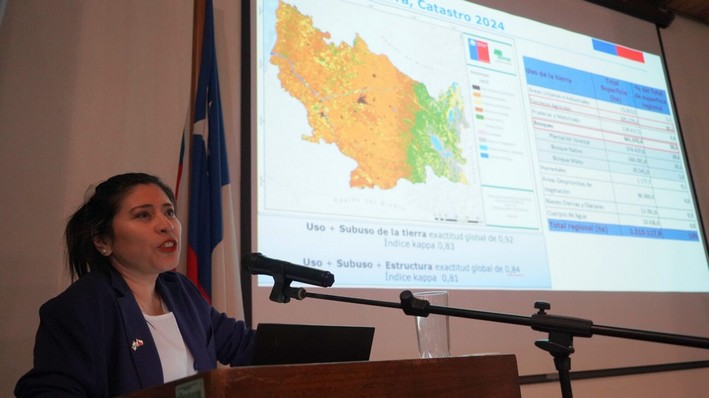UBB Researcher Obtains Invention Patent from INAPI
Dr. María Graciela Aguayo, a researcher from the Wood Engineering Department of the Faculty of Engineering at the Universidad del Bío-Bío (UBB), has recently been granted her invention patent No. 70759, titled "A Wood Preservative Composition and Method for Its Preparation." To date, UBB holds 89 patents.
For Dr. María Graciela Aguayo, achieving this patent represents a significant milestone in her research line on wood protection and the use of nanomaterials. "This achievement validates the innovative nature of our development and its potential market application," comments the researcher, who also highlights that the patent reinforces the impact of applied research, ensuring scientific advances do not remain confined to academic publications but translate into concrete solutions for the timber-forestry industry and end-users. "This accomplishment also opens new opportunities to collaborate with sector companies, fostering technology transfer from the university to the industry," she adds.
The Director of Innovation at UBB, Dr. Mario Núñez, underscores this achievement as a milestone for the university. "While it is a recognition of the work of an inventor, in this case led by Dr. María Graciela Aguayo, it is also a recognition of our University that fills us with pride and strengthens us as a public and bi-regional institution. Securing a patent is essential for researchers because it helps protect inventors' rights, boosts market competitiveness, and promotes the development of innovation and new technologies," emphasizes Dr. Núñez.
Patent Details
The patent granted to Dr. Aguayo protects an innovative wood preservative formulation based on copper and cellulose nanoparticles. This formulation is designed to protect radiata pine wood, commonly used in construction in Chile, against degrading agents such as fungi and insects. The research demonstrates that this preservative significantly reduces biocide leaching, improving the performance and durability of impregnated wood.
"One of the main advantages of this preservative is that it contains no toxic or carcinogenic compounds, unlike conventional preservatives like CCA (copper-chromium-arsenic), whose use has been widely restricted due to its environmental impact and health risks," explains Dr. Aguayo. Additionally, the formulation is compatible with current impregnation processes, facilitating its implementation in the industry without modifying existing infrastructure.
Beneficiaries
The patent will primarily benefit the timber and construction industries, which seek more effective and sustainable solutions for wood protection. The preservative supplier industry will also benefit by having a more environmentally friendly alternative, improving their product standards.
The environmental sector and society at large will also benefit from access to products free of toxic compounds like chromium and arsenic, helping to reduce the environmental impact of preservative treatments and discarded impregnated wood.

















